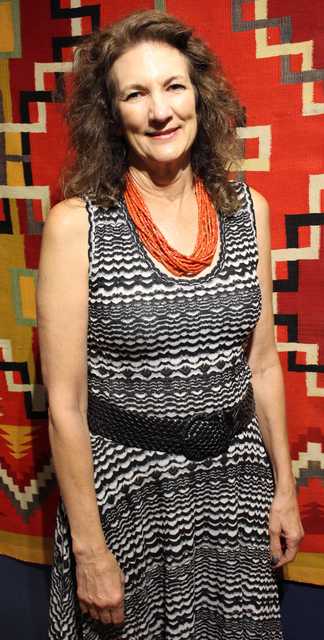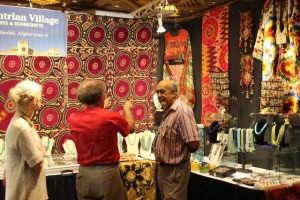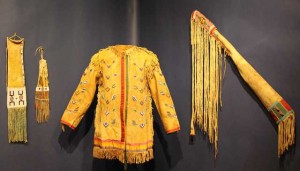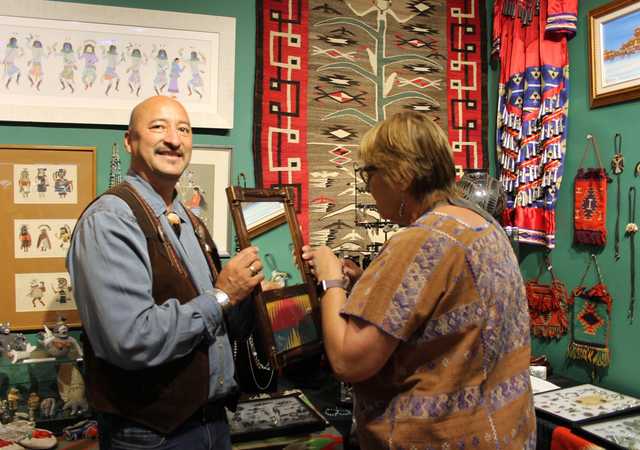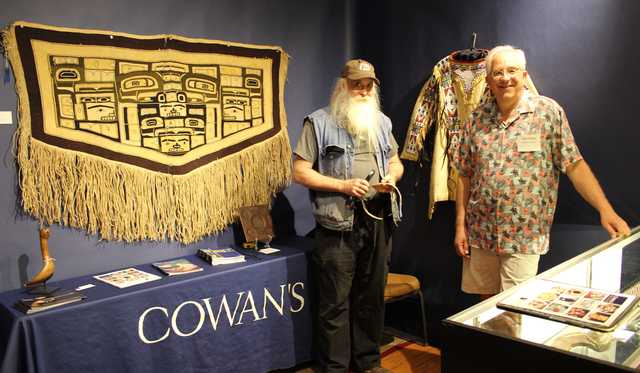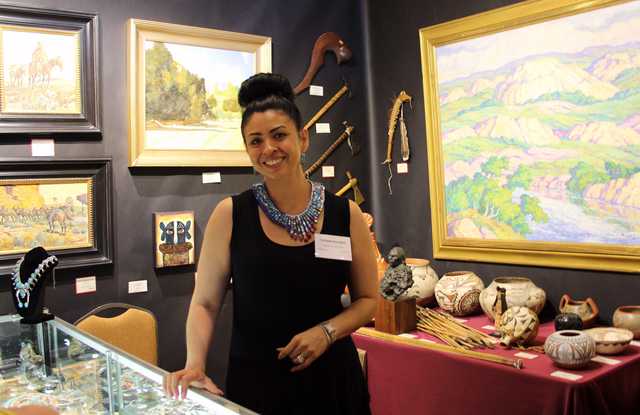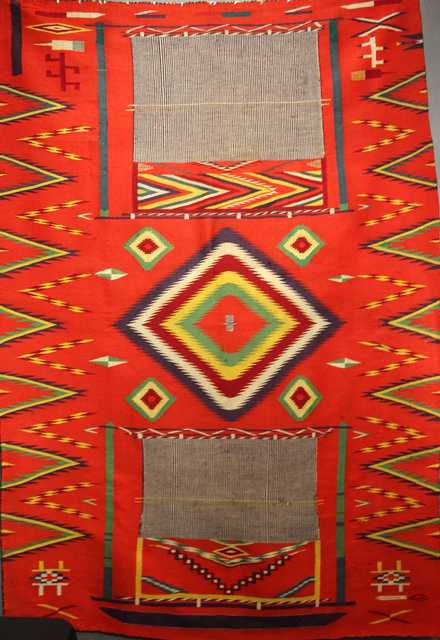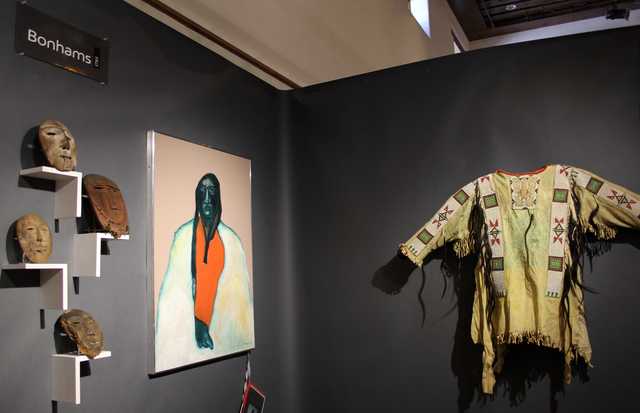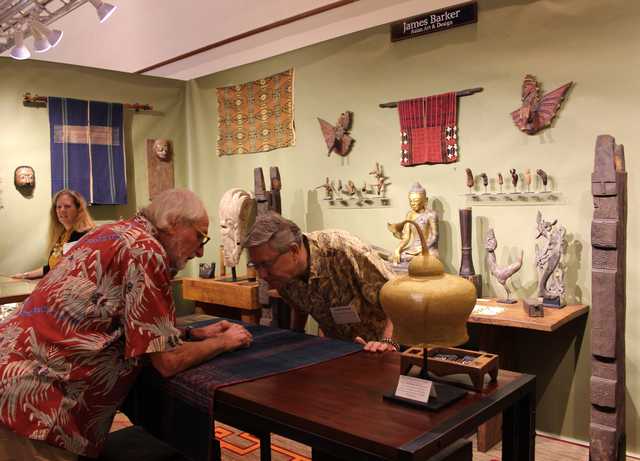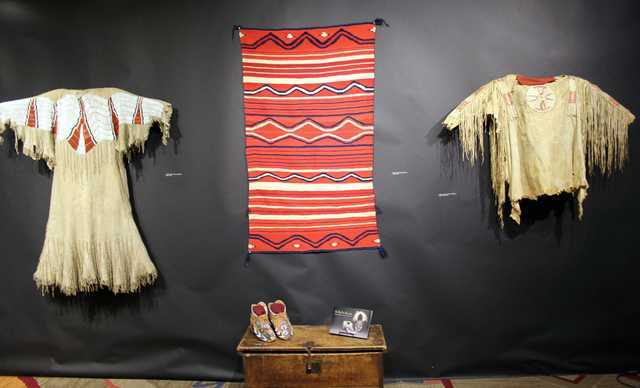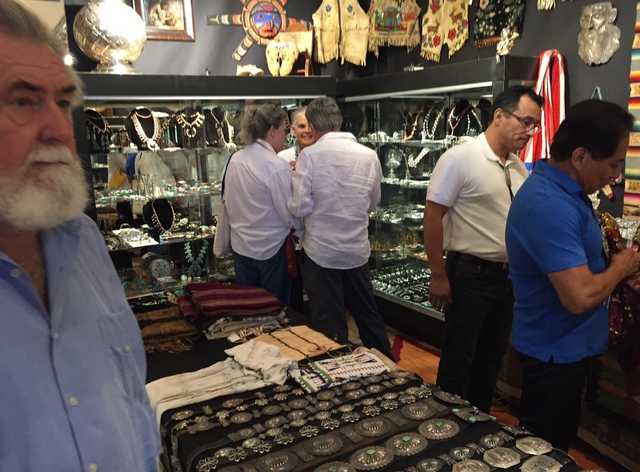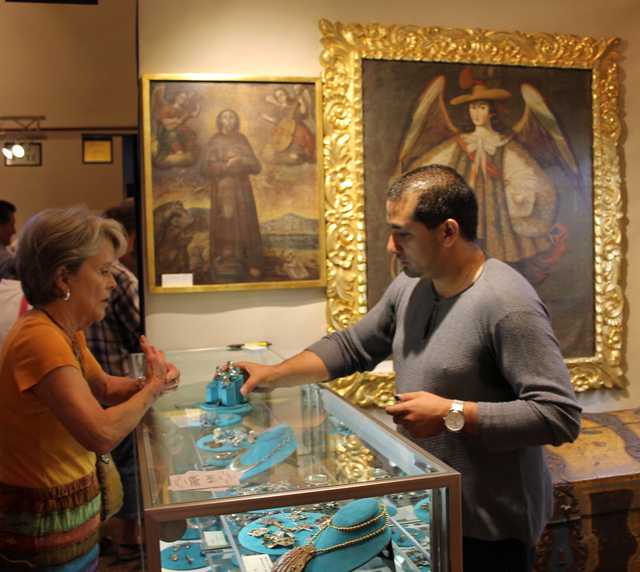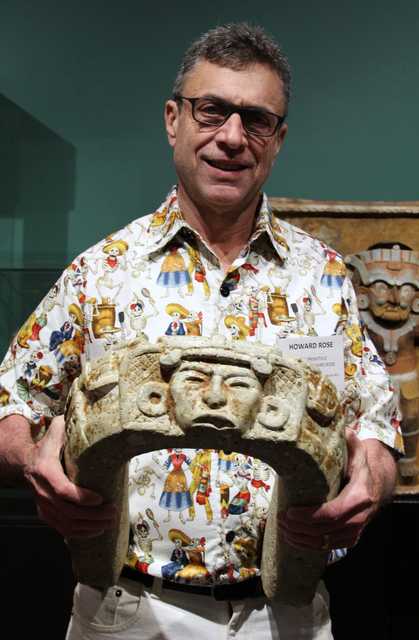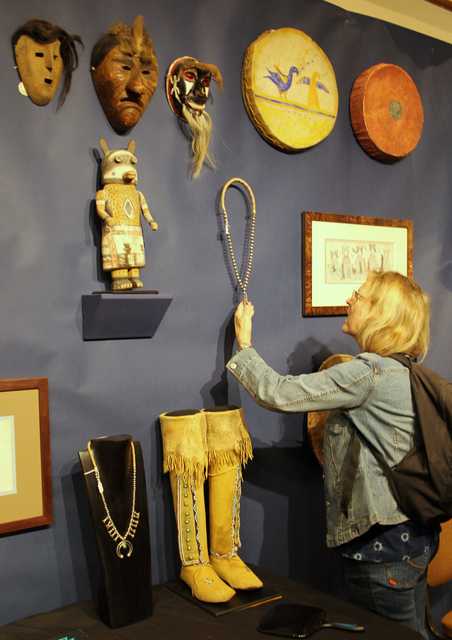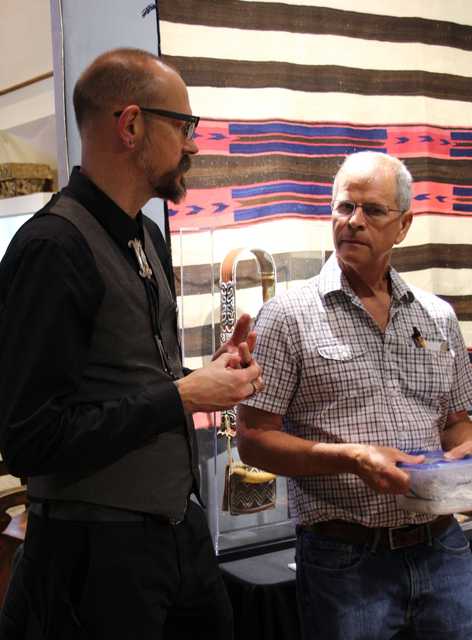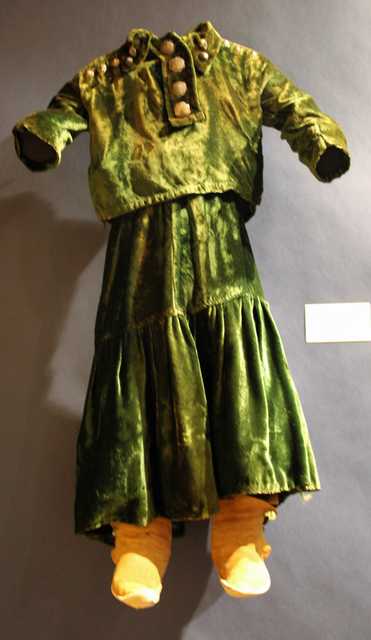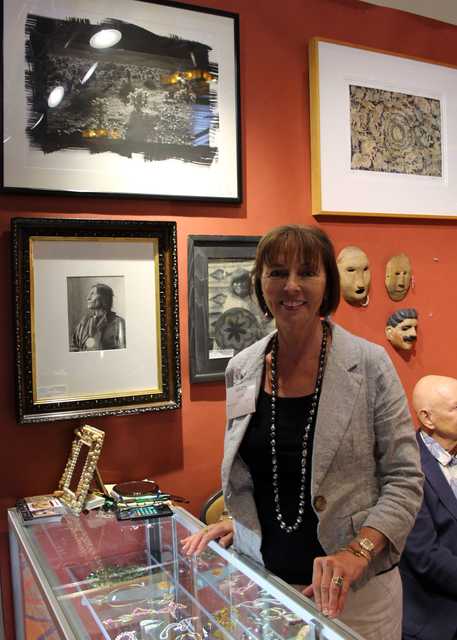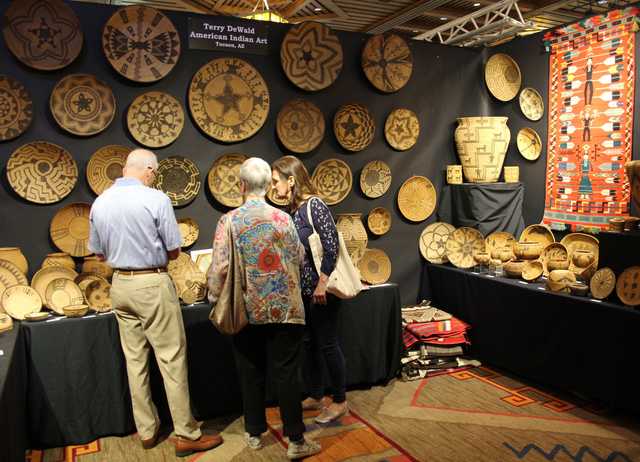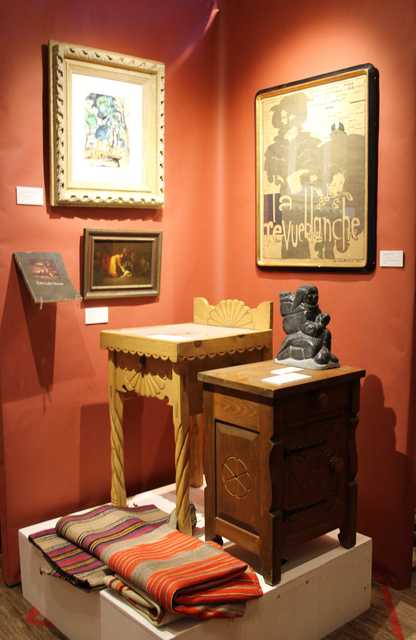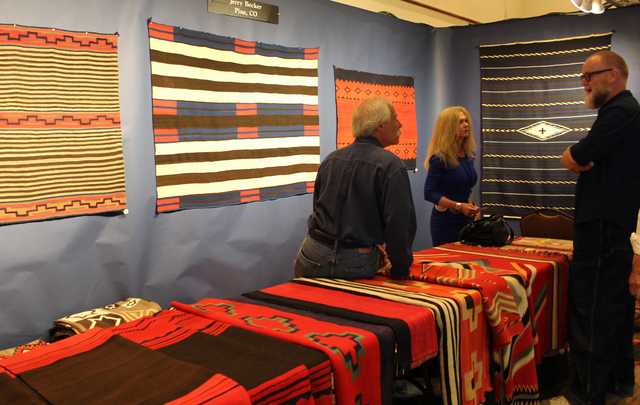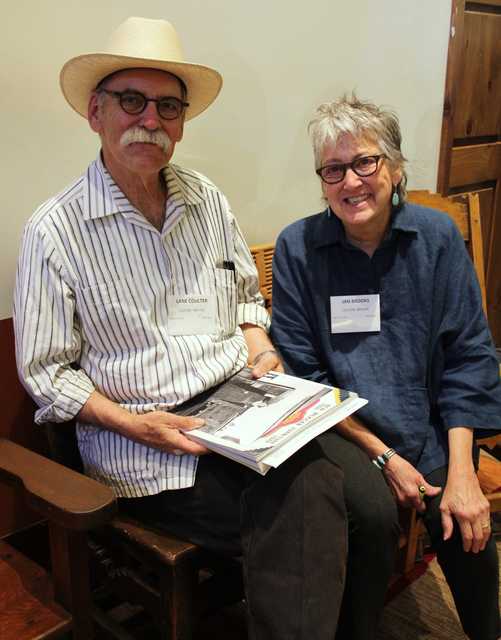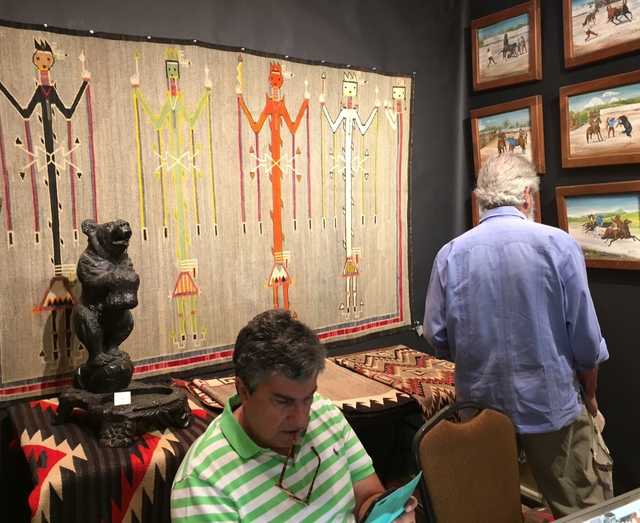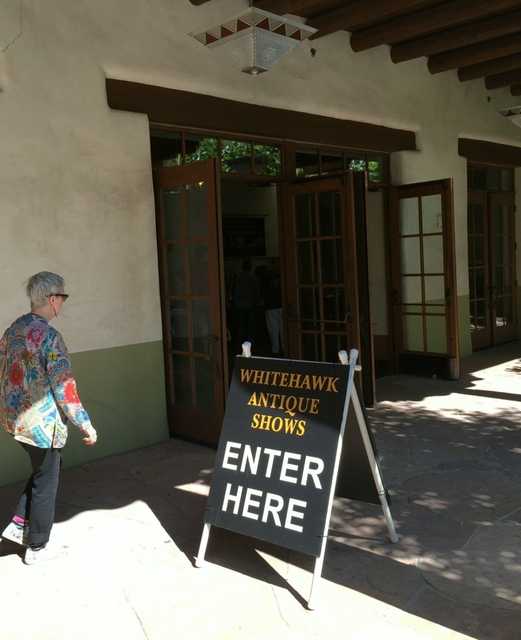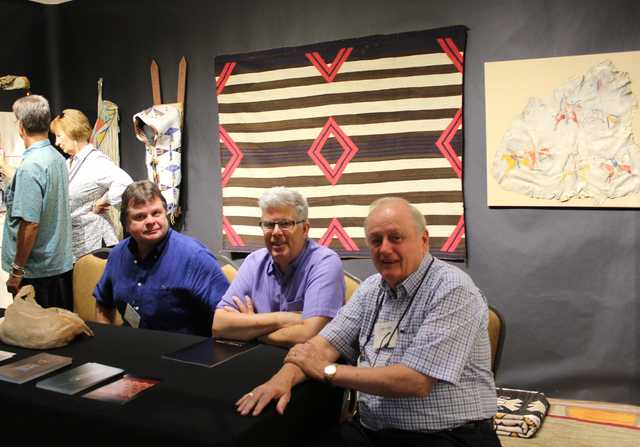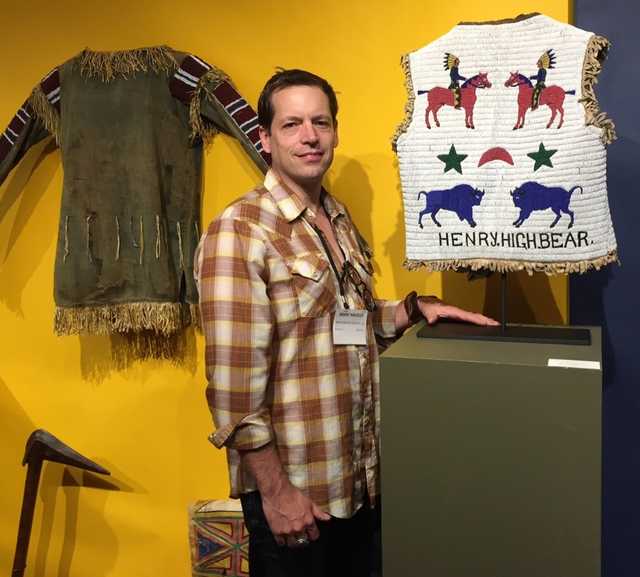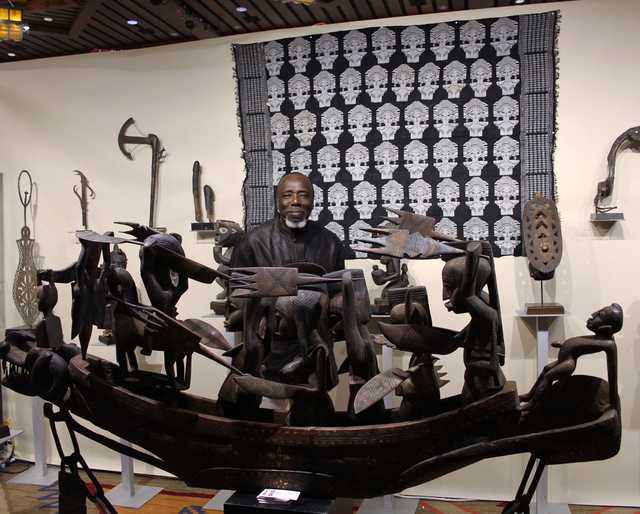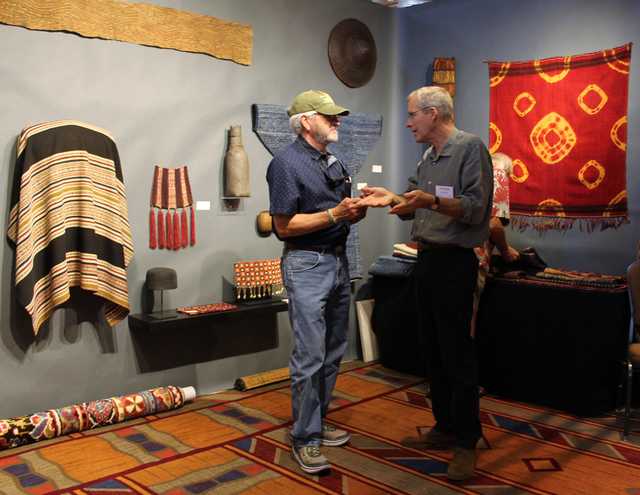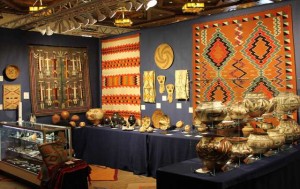
New York City dealer Marcy Burns brought pottery from two major collections she is currently handling. One features historic material. The other emphasizes work by modern masters.
Review and Photos by Laura Beach
SANTA FE, N.M. — Now in its 38th year, the Whitehawk Antique Indian & Ethnographic Art Show has grown from its improvisational beginnings to become one of the nation’s top venues for historic Native art and related specialties. It brings together major dealers and avid, well-heeled collectors. Moreover, it does so one week before Santa Fe’s near-century-old Indian Market kicks into high gear.
Pulling out of a postrecessionary lull, Santa Fe seems busier than ever these days. Its restaurants, hotels and streets were full as art buyers rolled into town, eager to sample the auctions, gallery events and fairs that stretched through most of August. Beyond the market activities, fine arts, music and the great outdoors beckon a sizeable seasonal population, much of it from Texas, California and New York. At Whitehawk, the confluence of East and West Coast buyers and sellers, and the dual emphasis on historic and contemporary art, made for a lively exchange.
Santa Fe’s oldest antique Indian art fair was founded by the late Don Bennett and is today produced by Marcia Berridge. Two years ago, the longtime events manager combined two shows to make one. “At first, the Indian arts dealers were hesitant, but it has improved the quality of the show and made it more interesting to buyers,” says Berridge, whose vendors seem to agree.
The fair opened with a lively preview on Friday evening, August 12. In town for the exhibition “Sacred Realm: Blessings & Good Fortune Across Asia” at Santa Fe’s Museum of International Folk Art, Buddhist monks offered a blessing and a chant at the Whitehawk Show, which sets up in the Santa Fe Community Convention Center. The pleasant venue in the city’s historic center offers convenient, affordable parking.
Marcy Burns had the first booth to the left of the show’s entrance. The New York City dealer exhibits at the Philadelphia and Delaware Antiques Shows. For Whitehawk, she pulled out all the stops, showing more than two dozen pots against walls hung with Navajo weavings, beaded and painted hide artifacts and woven trays and baskets. A case loaded with Native American and Mexican silver jewelry produced some of her best sales.
“I brought two major collections of pottery, one historic, one by modern masters. Both were very well received,” said Burns. “Attendance was excellent, both in quality and number, especially on the opening two days of the show. By Sunday and Monday, be-backers overlapped with a fresh group of collectors just arriving in town.”
Burns shared her aisle with Santa Fe dealer H. Malcolm Grimmer, a legend in these parts, and Brant Mackley, a high-profile Native American and tribal arts specialist from Pennsylvania. His business takes him to Santa Fe so often that he recently bought a house on Paseo de Peralta, near Restaurant Martin, one the city’s most admired new restaurants.
Grimmer gave visitors a foretaste of his ambitious new exhibition and catalog, “The Path to Beauty: The Art of Plains Indian Moccasins,” showing a handful of beaded examples. His rigorously edited display also included a Yakima pony-beaded dress of circa 1860; a Navajo child’s blanket of circa 1865; an Upper Missouri man’s shirt, possibly as early as 1800; and a Sioux bow case and quiver set of circa 1870.
Mackley’s showstopper was a late Nineteenth Century Sioux beaded vest. The back of the vest, collected by the Robinsons, a trading-post family, bears the name of its original owner, Henry High Bear, a Sitting Bull associate who died in 1907. The front of the vest is decorated with elk and crossed American flags.
“One show, endless treasures” is Whitehawk’s motto, a phrase encapsulating both the focus and breadth of this presentation. Native American art may be Whitehawk’s strong suit, but the fair is also rich in New World antiquities, Mexican silver, Spanish Colonial fine and decorative arts, California and Western paintings, ikat and other Southeast Asian textiles, and Near Eastern and African sculpture, textiles and artifacts. The price range is great, from roughly a hundred to several hundred thousand dollars.
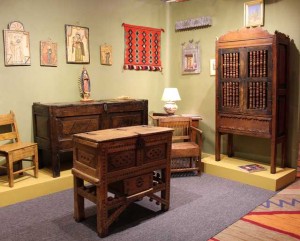
Early New Mexican furniture formerly in the collection of Taos doyenne Mabel Dodge Luhan was a highlight at Coulter Brooks Art and Antiques, Santa Fe, N.M.
Howard S. Rose directed the Harmer Rooke Gallery before launching the Manhattan firm Arte Primitivo in 1971. Cases of ancient jewelry in hammered gold and stone offset an Arte Primitivo highlight, a circa 600-900 AD carved “supernatural” deity yoke in grayish-green stone. The sculpture, formerly in the Sue Raider collection, was priced in the mid-five figures.
The market for jewelry, a perennial best-seller, seems to be in a particularly robust phase right now. There was plenty of jewelry to choose from, ranging from Mexican silver, colonial to contemporary, at Casa Navarro and Federico, to Native American silver at Tony Herbst, Manitou Galleries, Wild West Antiques and many others.
Native American and Spanish southwestern weaving were prominent at David Cook, Elk Creek Trading, Richard Pohrt, Jr and others.
For historic basketry of Arizona and California, no one offered more selections than Tucson, Ariz., dealer Terry DeWald, who covered every inch of three walls with woven trays.
Early New Mexican furniture has not survived in great quantity, making Lane Coulter and Jan Brooks’ presentation of two pieces formerly in the collection of Taos doyenne Mabel Dodge Luhan, currently the subject of a major traveling exhibition, all the more remarkable. Against their right wall, the Santa Fe dealers displayed an early Nineteenth Century trastero, or cupboard, with the spindled doors that are traditional. In the center of their booth was a chest-on-stand dating from the last quarter of the Eighteenth Century. Luhan gave the chest to historian Frank Waters, author of The Book of the Hopi, among other titles, and the piece recently came out of his widow’s estate. The work closely resembles a chest-on-stand in the collection of the Art Institute of Chicago, thought to have been made between 1780 and 1830 by a member of the Valdes family of Taos County, N.M.
Two auction houses, Cowan’s and Bonhams, set up at Whitehawk. Wes Cowan and Cowan’s specialist Danica Farnand brought selections from the firm’s September 23 auction of American Indian and Western art, which will feature property from Jim Richie, John O. Behnken and Norm Flayderman. Ingmars Lindbergs, Native American art specialist at Bonhams in San Francisco, Calif., arrayed pieces from his December 5 sale. They ranged from a Nineteenth Century chief’s blanket and beaded war shirt to a portrait on canvas by Fritz Scholder (1937–2005) from the artist’s Dartmouth Portraits series. The work illustrated the cover of the catalog to the 1974 Cordier & Eckstrom show in Manhattan that is credited with launching the Pop artist’s career.
“The Whitehawk Show was beautiful with fabulous material. I look forward to being back next year,” said Marcy Burns, offering the consensus view.
Berridge, for her part, thanked her loyal customers. “We’ve been grateful and blessed to have good crowds. Through thick and thin, collectors want to see what’s out there. We’re a destination.”
The 2017 Whitehawk Antique Indian Art & Ethnographic Show previews on Friday, August 11, continuing through Monday, August 14.
For details, go to www.whitehawkshows.com or contact Marcia Berridge at 505-992-8929 or mberridge@whitehawkshows.com.

